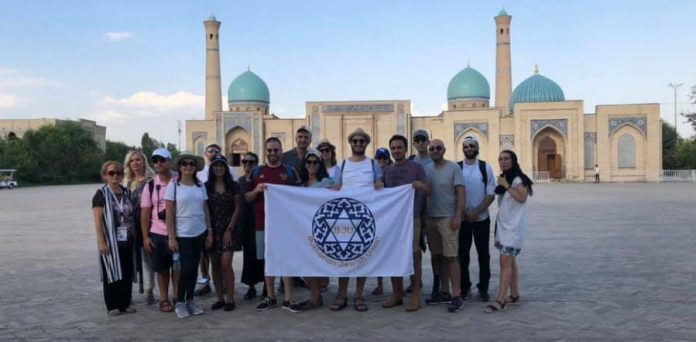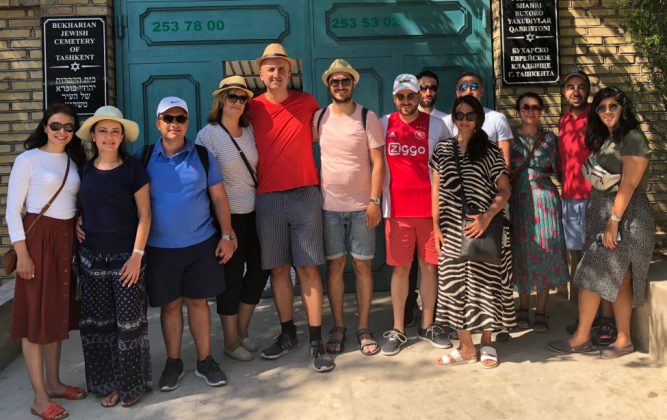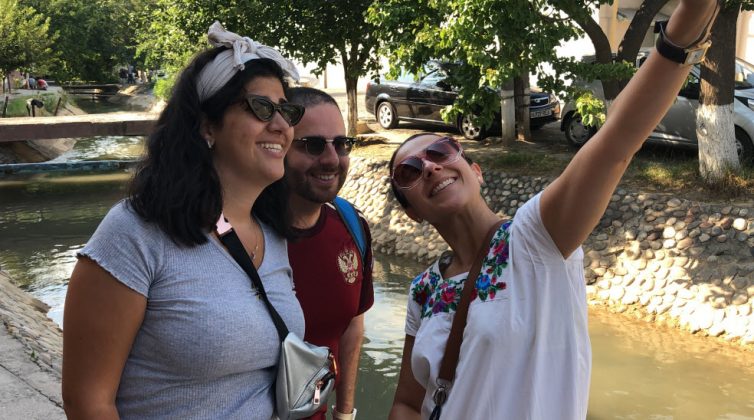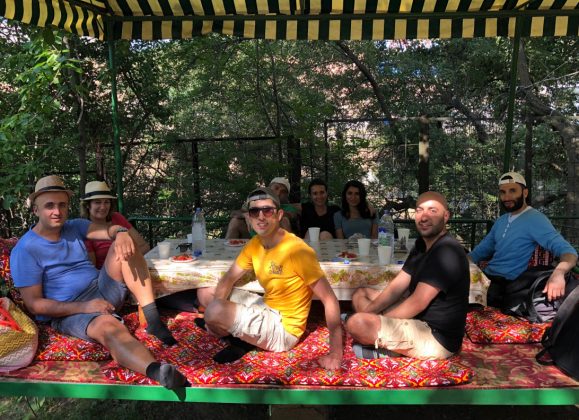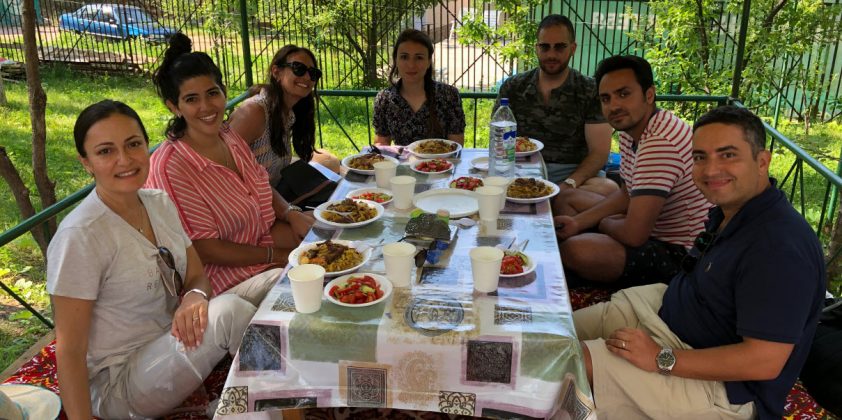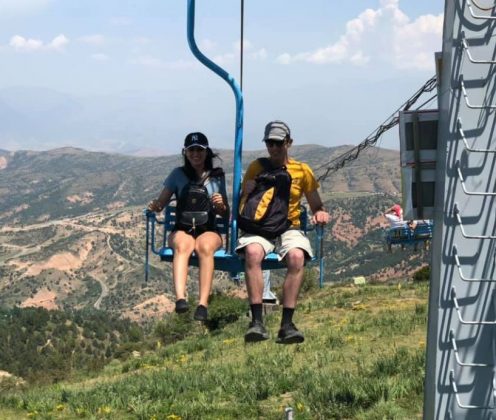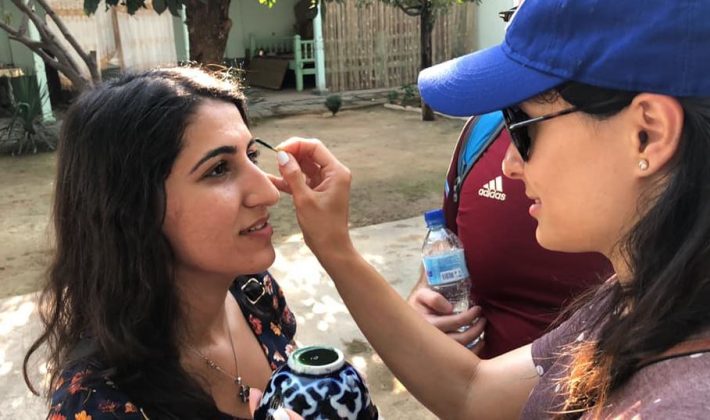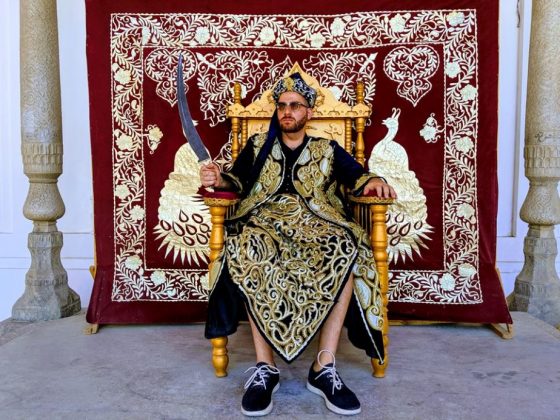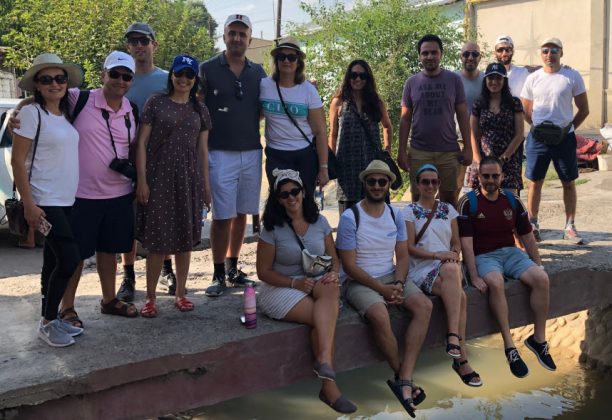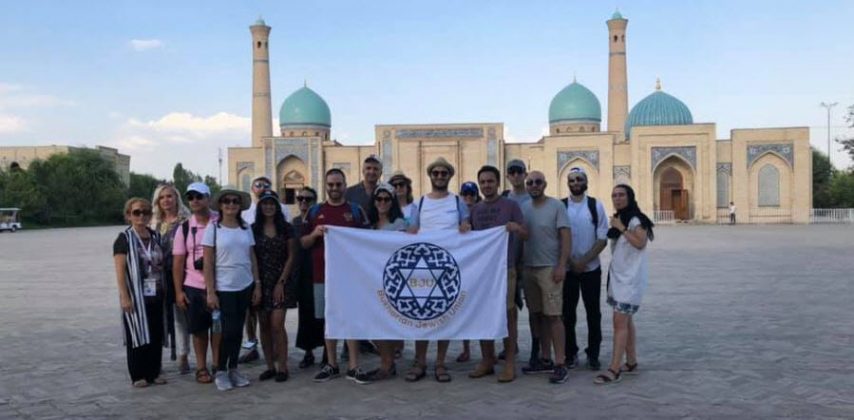There is no future without the past
BY SERGEY KADINSKY
Sixteen young professionals went on the trip of a lifetime last week, visiting their ancestral hometowns in Uzbekistan on a trip organized by the Bukharian Jewish Union. “I really wanted to find the house where I was born and the graves of my ancestors and I did it,” said Avraham Yagudayev who traveled with his wife Irina Aronova. It was his first visit to Samarkand, his birthplace, in 27 years.
Likewise for Aronov, who last walked in Tashkent 21 years ago before immigrating with her family to New York. “The city has changed, many of the old houses have been knocked down but there are also new homes there that look like Jamaica Estates,” she said. “I visited the graves of my grandparents and great-grandparents.”
She also visited Bukhara for the first time in her life. The city lends its name to all Jews whose families have centuries-long history in Central Asia and was the capital of the Bukhara Emirate, the last ruling indigenous monarchy in the region. “When we visited Samarkand, the mahalla looks like nothing changed and my husband found his old home,” said Aronova.
The sixteen participants in this year’s trip included four Persian Jews, Randy Agadi, Josephine Mairzadeh, Ariel Yousefzadeh, and Kevin Hakimian, who took the trip to better understand a region and culture that closely resembles that of their ancestral home. “Randy is amazing. He knows Jewish songs in many languages and now he’s memorizing Yakumin ki Medonad, our Passover song,” said Manashe Khaimov, who organizes the seven-day tour. “He is a Masshadi Jew. During the period of forced conversion to Islam, many Masshadi Jews fled to Central Asia and lived among Bukharian Jews.”
Along with the historic synagogues, Jewish neighborhoods and cemeteries, this year’s trip included a meal at the recently opened kosher restaurant at the Kabir Hotel in Bukhara, and a series of outdoor adventures that showed the natural destinations of Uzbekistan. “We did outdoor activities this time. We drove off-road, on horseback, and up a mountain on ski lifts,” said Khaimov. “We saw snow atop the mountains in July and the meting water that formed streams. We swam in a reservoir and raced in jet skis. All in a seven day tour.”
Rozeta Mavashev was born in New York, the daughter of parents with roots in Samarkand. “I was able to find my great great grandfather’s grave in Samarkand dating back to 1899, that’s over a hundred years ago! That’s a heritage so vast and rich that I wasn’t able to obtain anywhere in my educational experiences. What the Bukharian Jewish Union gave me was a visual hands-on history of my people.” Inspired by the trip, she hopes to see more young Bukharian Jews visiting their ancestral homes.
For the past year, Mavashev has been serving as the Director of Jewish Life at Hunter College Hillel on Manhattan’s Upper East Side. “Prior to my arrival on campus, the Bukharian students were not very involved in Hillel, but now there’s someone who looks like them at Hillel and they feel represented.” It is a story similar to Queens College, where Ruben Shimonov and later Manashe Khaimov made the campus Hillel a more welcoming place for Bukharian Jews with events and programs that represented their culture and history. In turn, Bukharian students took on leadership roles in campus Jewish organizations, and the larger Jewish community..
“I’ve already recommended next year’s tour to Bukharian students at Hunter College,” said Mavashev. “With my experience in grant writing, I am looking for sponsors to assist in making the trip accessible to more young people.”
The most famous heritage tour for Jewish college students and young professionals in Birthright Israel, which is subsidized by philanthropists with the support of the Israeli government. Like the BJU trip, Birthright also provides a mix of physical activities and historical sightseeing, with camelback rides, hiking, and rafting, along with holy sites, fortresses, and battlefields. On the BJU trip, internationally renowned sites include the Registan complex in Samarkand and the Ark of Bukhara. The Samarkand site was designed by Tamerlane as his religious and governmental center, while the Ark dates back to the pre-Islamic period and served as the royal seat of power until 1920, when communist forces defeated the emirate. Taking inspiration from a famous photo of the last emir, Agadi replicated the pose wearing a joma, while seated on a decorated chair while waving a toy sword, with a hanging carpet and columns in the background.
“Definitely recommended for those who have Bukharian roots as well for those who are interested in the rich long standing history of Bukharian Jewry,” said participant Natna Bababekov. But as it is often for older Bukharian Jews, the aspect of ziyarat, or visiting ancestral burial sites, remains the top item on the tour, fostering an appreciation of one’s heritage. “Aside from connecting with the wonderful people on this years trip, one of the biggest highlights for me was visiting all the kevrim (cemeteries) in Tashkent, Bukhara and Samarkand of my grandmother, great-grandparents and great-great-grandparents. Thank you again to Manashe Khaimov, team BJU, Benyaminov family and everyone else involved for the high level hospitality and awesome experience!”
Looking at the trip as a model of success, Khaimov is replicating its approach towards community building. “I’ve scheduled reunions for this year’s tour participants. Friendships were formed and together there’s so much that we can do.”


